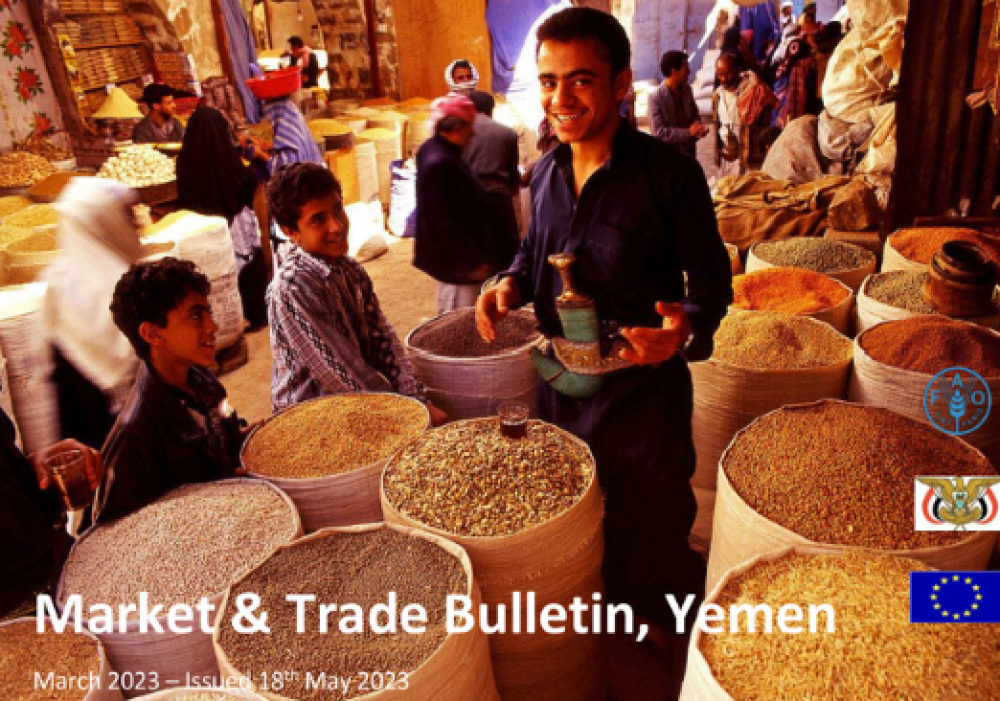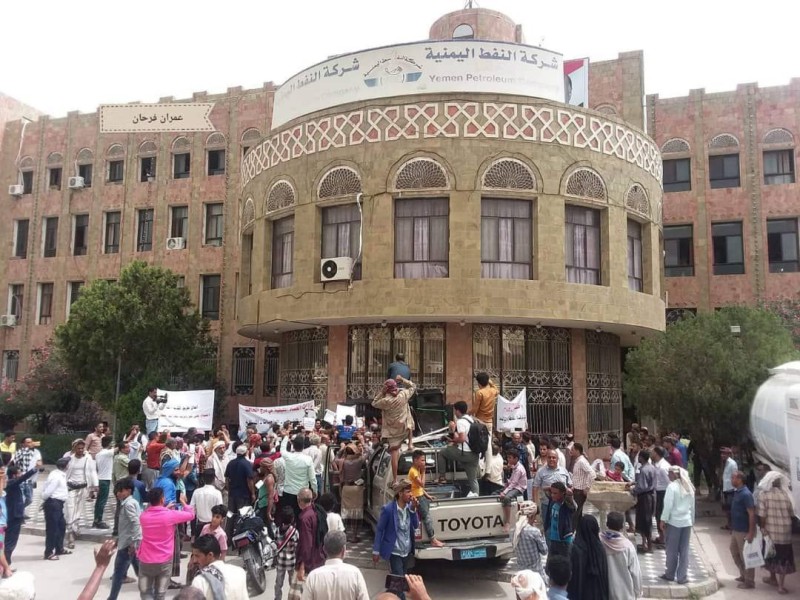Yemen Market & Trade Bulletin


KEY HIGHLIGHTS
The food security outlook through March/ April 2025 is concerning in both GoY and SBA areas, as households are anticipated to face increasing inability to access food. In SBA areas, food prices are expected to remain mostly stable, but access to income will continue to be limited, resulting in depleted household stocks. In contrast, GoY areas are projected to see further price increases from their already elevated levels, significantly surpassing those of 2024 and the three-year average (see Figure 10). This situation indicates a growing dependence on markets, while household purchasing power diminishes, restricting food access and exacerbating food insecurity in many areas.
In November 2024, staple food prices continued to increase in GoY areas, building on already elevated levels, while remaining stable in SBA areas. In November 2024, prices for key staples, such as, Basmati rice, kidney beans, cooking oil, and wheat flour remained very high and continued to rise in GoY areas compared to the previous month, while they remained stable in SBA areas (see Table 1 and Figure 1). The stability in SBA areas was supported by strict enforcement of exchange rate and food price controls. Conversely, the price increases in GoY areas were mainly driven by higher import costs resulting from currency depreciation. When compared to the same month last year and the three-year average, food prices in GoY areas saw significant increases, ranging from 15% to 37% and 20% to 41%, respectively.
In line with food price trends, the Minimum Food Basket (MFB) rose by 5 percent month-on-month, 28 percent yearon-year, and 33 percent compared to the three-year average in GoY areas, in nominal terms. In contrast, MFB prices declined in SBA areas. The significant year-on-year increases in the MFB were noted in GoY Governorates: Marib (45%), Shabwa (43%), Al Mahrah (35%), Taizz (35%), Lahj (28%), Hadramout (22%), and Aden (19%) (see Figure 3). It's important to highlight that, despite nominal food price decreases and stability in SBA areas compared to the same month last year (5-14%) and the three-year average (5-19%), many low-income households still struggle to afford food in markets, like those in GoY areas. The US dollar values are comparable in both SBA and GoY areas, equally affecting households. In November 2022, the real MFB cost (in USD equivalent) was similar in both areas at $102; however, by November 2024, it was $8 (10%) higher in GoY areas compared to SBA areas. Over the past three years, the MFB in USD equivalent has decreased in both areas due to faster currency depreciation outpacing the overall increase in MFB prices (see Figure 2).
In November 2024, the local currency (YER) exchange rate with the US dollar in areas controlled by the Government of Yemen (GoY) continued to decline sharply, surpassing the YER 2,000/ $ 1 mark for the first time, equivalent to 3 percent loss from the previous month. In contrast, the YER exchange rate against the US dollar remained relatively stable in SBA areas during the same period. In past year and a half, the local currency in areas controlled by the Government of Yemen (GoY) has seen a significant decline, depreciating by 26% year-on-year and 33% compared to the threeyear average (3-YA) as of November 2024. In contrast, the YER in SBA areas remained relatively stable year-on-year and appreciated by 6% against the USD compared to the 3-YA (see Table 1 & Figure 4). The weak value of the YER in GoY areas is mainly attributed to depleted foreign exchange reserves. Meanwhile, strict exchange rate regulations in SBA areas have eased some pressure on the YER, despite ongoing acute shortages of USD.
In November 2024, diesel and petrol prices remained stable month-on-month in both SBA and GoY areas, although they were significantly higher in GoY areas compared to the same month last year and the three-year average levels. In November 2024, diesel and petrol prices remained unchanged from the previous month in most markets (see Table 1 & Figure 6). However, compared to the same month last year and the three-year average (3-YA), diesel and petrol prices in GoY areas increased significantly by 7-14% and 29-31%, respectively. In contrast, petrol and diesel prices in SBA areas saw only slight year-on-year increases of 1-2 percent but declined by 2-6% compared to the three-year average. The rise in fuel prices in GoY areas is mainly attributed to the depreciation of the local currency (YER) against the US Dollar. When considering USD equivalents, fuel prices in SBA areas are higher than those in GoY areas by $0.30 to $0.40 (see Figure 7).

Hodeidah — Two members of the Iranian-backed Houthi militia were killed and five others wounded in a landmine explosion near Hodeidah airport…

Aden —A humanitarian convoy from Jordan, consisting of 13 trucks loaded with relief supplies, has arrived in Yemen to support communities aff…

Taiz — Administrative operations at the Taiz Governorate building have resumed following several days of closure caused by an open sit-in sta…